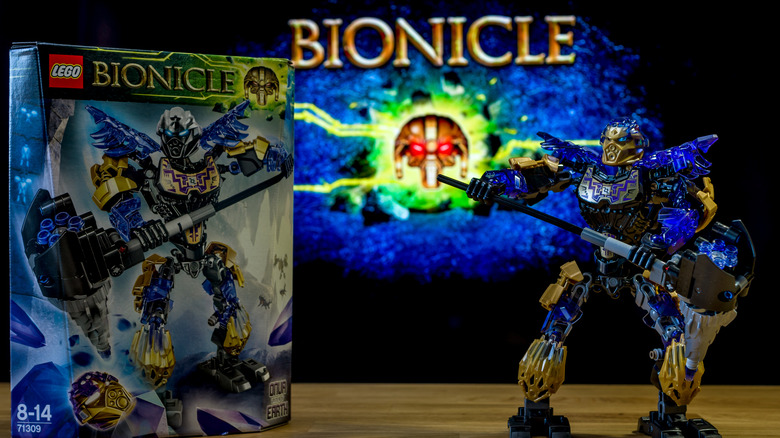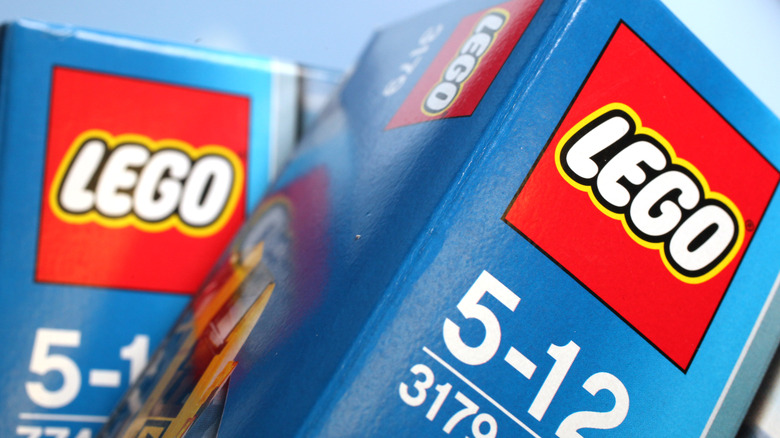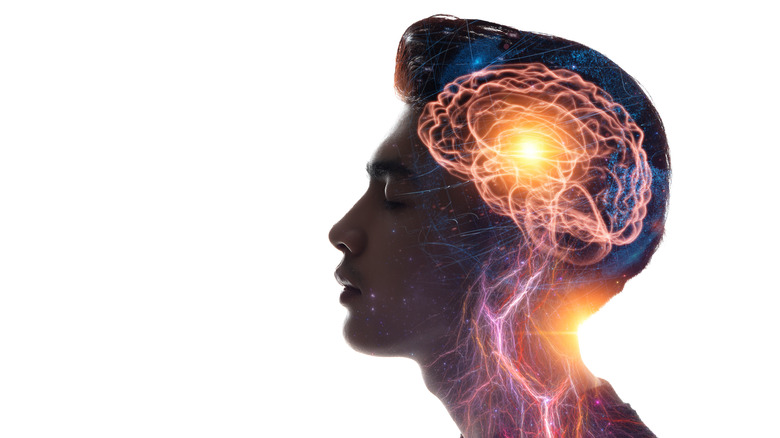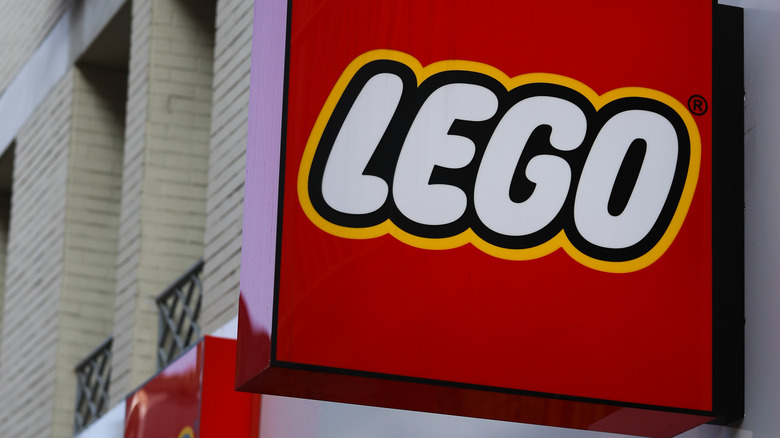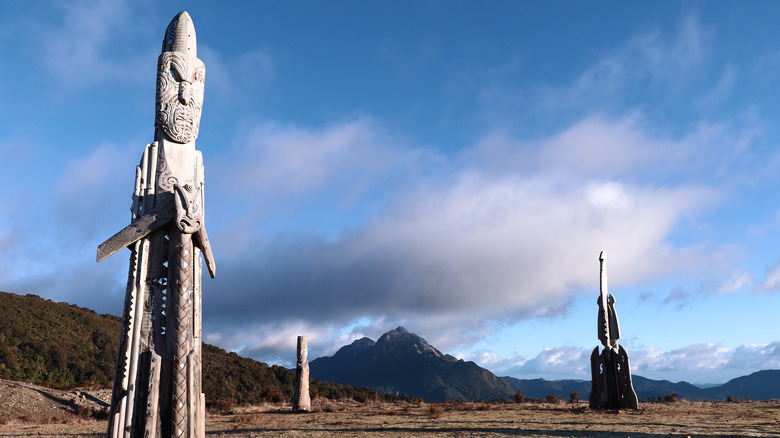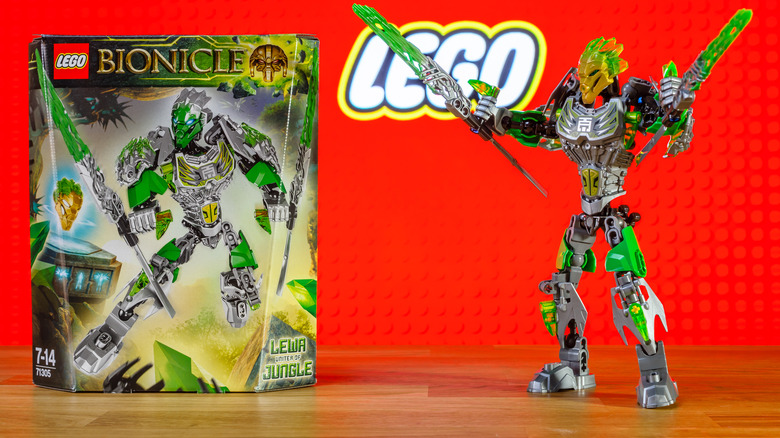What Happened To Bionicle?
Those who grew up in the early aughts may remember a series of toys that were packaged in cylindrical cans, each one containing a masked robot, superhero, warrior ... thing. They were part of a line of Lego sets known as Bionicle. Each character played a role in a deep and intricate overarching mythology that may have been the only thing about Bionicle more complicated than putting the sets together in the first place.
Lots of Bionicle toys were released, along with video games, movies, McDonald's Happy Meal tie-ins, and other merchandise (via Brickset). Bionicle was a huge success for Lego at the beginning of the 20th century, and the line of toys has been credited with helping to guide the Danish company through a period of financial difficulty. However, that success didn't come with controversy due to what some saw as appropriation of the Maori culture's symbols and mythology.
Lego goes through financial difficulties
The Lego Company was started in Denmark by Ole Kirk Kristiansen in 1932, and since then, the company has stayed in the family. Lego has become one of the most iconic toy brands, but that doesn't mean that the company wasn't dealt its fair share of trying times. A fire destroyed the Lego factory in 1942, and though it could've easily been the end of the business, Kristiansen built a new factory to remake all of the patterns that had been destroyed in the fire.
In the mid-90s, a very different existential threat was looming over the Lego Company. The business was on the skids financially, and by 2004, the company was approaching the billion-dollar mark in debt (via Quality Logo Products). Getting out of that bind required some restructuring — the company sold its theme parks to Merlin Entertainment and got rid of its video game division instead of choosing to license the Lego name and products to other game developers.
Speaking of licensing, that was another huge reason the company escaped bankruptcy — Lego started licensing the characters from some fledgling little sci-fi franchise called "Star Wars," and those toys sold like Lego hotcakes (via License Global). Another thing that helped Lego during this stretch was the introduction of some popular original properties and concepts, one of them being Bionicle.
The idea for Bionicle came from an unlikely place
Christian Faber was working for a marketing agency that did a lot of business with Lego when he had an idea for a new project. "I was sitting with LEGO Technic and thought I would love to build a character instead of a car," Faber told Popular Mechanics. "I thought of this biological thing: The human body is built from small parts into a functional body just like a model. What if you got a box full of spare parts and built a living thing?"
Part of his idea — which he called Cybots but eventually morphed into Bionicle — came to him after battling a brain tumor. He told StoneWars that the idea for the brand's iconic packaging and storyline came from pills he had to take as part of his treatment. "This led to the initial idea to have this robot underneath the big island, and then the medicine arrives on the beach," he said. "But the medicine, the Toa (primary Bionicle characters), were simply not knowing what they would have to do and first had to find out that they were actually heroes in a big story."
This was combined with a toy series Lego was developing called Boneheads of Voodoo Island, which shared some characteristics with what became Bionicle but was a miserable failure in focus group testing. In 1999, Bionicle started rolling out into select test markets.
Bionicle becomes a hit
Bionicle — the name, by the way, is a combination of the "biological" and "chronicle," according to Popular Mechanics — became a hit almost immediately. Part of the prelaunch marketing involved an online game that explained a lot of the deep backstory to the franchise, and it became one of the major pillars of Bioncle's success and how it helped Lego's bottom-line; Bionicle had legs as a multi-media franchise.
While selling "Star Wars" toys required royalty payments to Lucasfilm, Bionicle was owned by Lego. As the toys became more and more successful, new lines were launched. Eventually, video games and feature films were in the mix, as were comic books, and each branch of that multi-media tree served to tell the same central story and further Bionicle lore.
But like anything that becomes massively popular, controversy is sure to follow, and Bionicle was no exception.
Bionicle draws criticism from Maoris
While it didn't derail the Bionicle franchise by any means, Lego was faced with a significant issue shortly after the toys launched. From the beginning, it was clear that much of the imagery and symbolism in Bionicle was rooted in cultures found in the South Pacific.
According to The Guardian, the main storyline of the Bionicle franchise takes on a fictional island called Mata Nui, while different types of characters have names like Toa and Tohunga. If those names sound vaguely Polynesian, it's because they are. Not only were some vaguely similar to actual Polynesian words, but "tohunga" is also an actual word for a spiritual healer. This landed Lego in court as the Maori people found the usage of the term in the context of the Bionicle franchise to be offensive.
In court, Lego admitted to using actual words for some of the toys. The Maoris won the case, and Lego released a statement after the 2001 ruling saying, "Future launches of Bionicle sets will not incorporate names from any original culture. The Lego company will seek to develop a code of conduct for cultural expressions of traditional knowledge."
Discontinuation and return
According to Popular Mechanics, Bionicle's first run came to an end in 2010, but while it was around, it certainly did its part to help the company. When Lego was in the throes of the worst part of its financial problems around 2004, Bionicle made up a quarter of the company's sales. Bionicle also left behind a devoted fanbase, and Lego must've been aware of this — in 2015, the company rebooted the franchise. According to Brickset, that iteration of Lego toys only lasted until 2016 before they were discontinued as well.
Still, fans are clamoring for Bionicle toys that harken back to the originals that many now-20 and 30-somethings had as kids. In 2021, Lego's BrickLink Designer Program, which is a program for Lego fans to crowdfund models, launched plans to release ideas that had been previously rejected by the company at some point in their development (via Brick Fanatics). One of the sets in contention was a tribute to the original Bionicle run, which had its 20th anniversary in 2021. The set consisted of a rotating platform featuring four different scenes that depict various aspects of the Bionicle story.
